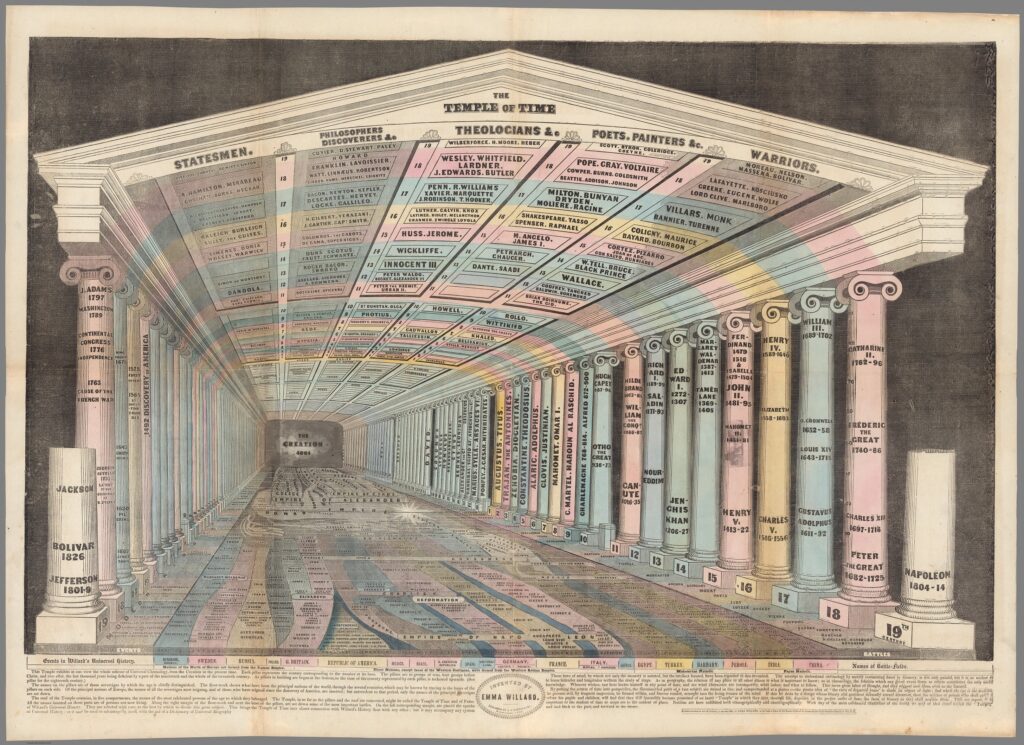“The Temple of Time” (1846) by Emma Willard
Source (Cartography Associates: CC BY-NC-SA 3.0).
Emma Willard’s devotion to visual mnemonics shaped much of her work. In the 1840s, she published another elaborate visual device, named the “Temple of Time”. Here, she attempted to integrate chronology with geography: the stream of time she had charted in the previous decade now occupied the floor of the temple, whose architecture she used to magnify perspective through a visual convention. Centuries — represented by pillars printed with the names of the era’s most prominent statesmen, poets, and warriors —diminished in size as they receded in time, turning the viewer’s attention toward recent history, as in the “Course of Empire”. But in the Temple of Time, the one-point perspective also invited students in to inhabit the past, laying out information in a kind of memory palace that would help them form a larger, coherent picture of world history. Readers, in other words, were invited into the palace, so they too could stand at moments in world history.
— From an essay by Susan Schulten in Public Domain Review.
